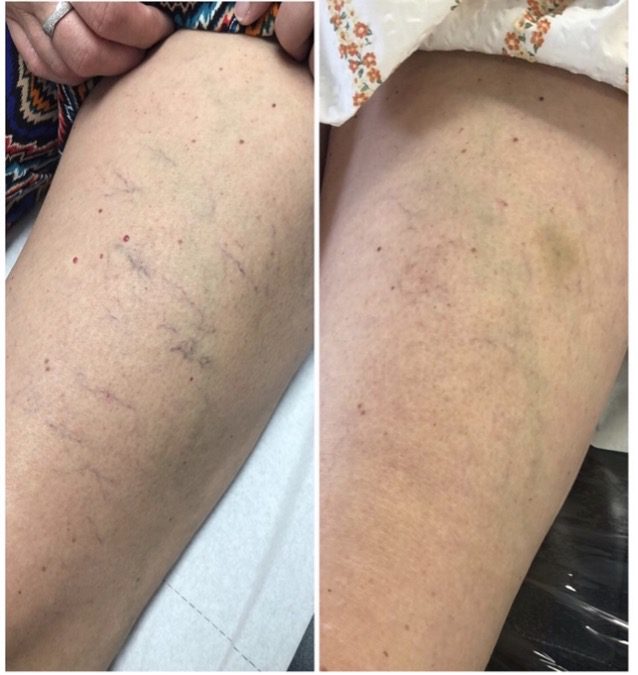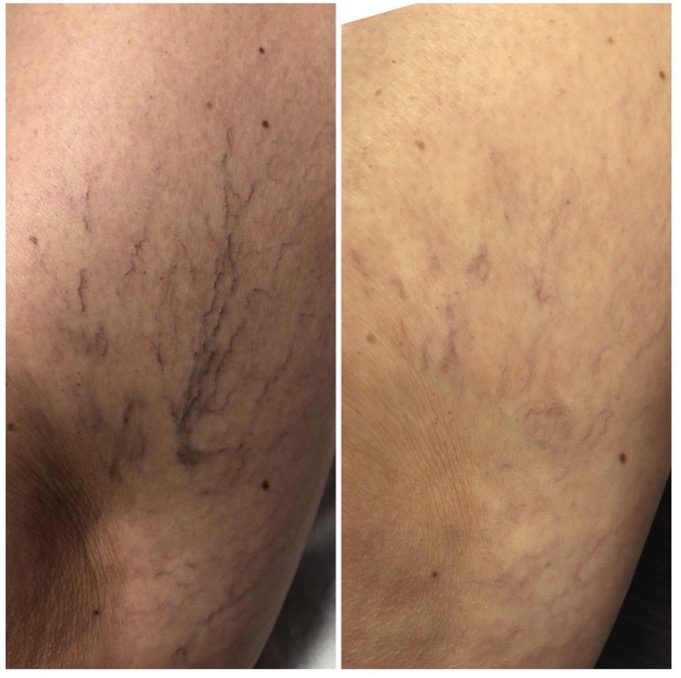AESTHETICS TREATMENTS
Sclerotherapy
Sclerotherapy is a medical procedure used to eliminate spider
Veins in the legs. Sclerotherapy involves an injection of a
solution (generally a salt solution) directly into the vein.
The solution irritates the lining of the blood vessel, causing it to
collapse and stick together and the blood to clot.
Over time, the vessel turns into scar tissue that fades from view.
How is Sclerotherapy Performed?
The sclerosant is injected through a very fine needle directly into the vein. At this point, you may experience mild discomfort and cramping for one to two minutes, especially when larger veins are injected. The procedure itself takes approximately 15 to 30 minutes.
The number of veins injected in one session depends on the size and location of the veins, as well as the general medical condition of the patient. This may involve avoiding certain medications, such as aspirin or blood thinners, or using lotions on the area of treatment.
Spider veins usually respond to the treatment in 3-6 weeks, if the treatment is successful, the veins will disappear. If not, your practitioner may recommend repeated treatments.
According to 2016 research into the effects of sclerotherapy treatment for abnormal blood vessel development, sclerotherapy is successful in around 75 – 90 % of cases.
If the treatment is successful, spider or varicose veins will not reform. However, new veins may appear, and if they become problematic, a person may need repeated treatments.
Also, some people have some bruising or marks at the site of the injection.
We aim to provide high-end results
what you need to know
Risks & side effects
If trained, qualified healthcare professionals do sclerotherapy correctly, it is a safe and effective treatment.
However, having existing medical conditions, not following medical advice, or taking medications that conflict with the treatment may significantly increase the risk of complications.
Sclerotherapy is not suitable for people who are pregnant, breastfeeding, or confined to bedrest. After giving birth, people must wait 3 months before having sclerotherapy.
Possible risks and complications of sclerotherapy include:
– an infection, which requires treatment with antibiotics in under 1 in 1,000 cases
– a skin injury that may result in a small, permanent scar
– severe inflammation
– an allergic reaction to the injected solution
– a blood clot
Also, if tiny air bubbles from foam sclerotherapy get into the bloodstream, it may cause chest tightness, a dry cough, dizziness, and nausea. Please note these are extremely rare.
Candidates for Sclerotherapy
Prior to sclerotherapy, you will have an initial consultation where it will be decided if you’re a good candidate for the procedure.
You are not eligible if you are pregnant. You can have sclerotherapy if you are on contraceptive medication or devices.
If you have had a blood clot in the past, your eligibility will be decided on an individual basis, and will depend on the overall health of the area needing treatment as well as the reason for the clot.
First Treatment: £195
Follow Up Treatment: £165
SEE OUR CASE STUDIES
Our Before & After Gallery





